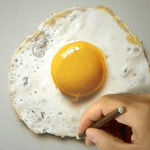 Facts
Facts  Facts
Facts  Movies and TV
Movies and TV 10 Movie Adaptions That Brought Popular Songs to Life
 Health
Health 10 Miraculous Advances Toward Curing Incurable Diseases
 Miscellaneous
Miscellaneous 10 Undeniable Signs That People’s Views of Mushrooms Are Changing
 Animals
Animals 10 Strange Attempts to Smuggle Animals
 Travel
Travel 10 Natural Rock Formations That Will Make You Do a Double Take
 Movies and TV
Movies and TV 10 Actors Hidden in Your Favorite Movies
 Our World
Our World 10 Science Facts That Will Change How You Look at the World
 Pop Culture
Pop Culture 10 Incredible Female Comic Book Artists
 Crime
Crime 10 Terrifying Serial Killers from Centuries Ago
 Facts
Facts 10 Things You May Not Know about the Statue of Liberty
 Movies and TV
Movies and TV 10 Movie Adaptions That Brought Popular Songs to Life
 Health
Health 10 Miraculous Advances Toward Curing Incurable Diseases
Who's Behind Listverse?

Jamie Frater
Head Editor
Jamie founded Listverse due to an insatiable desire to share fascinating, obscure, and bizarre facts. He has been a guest speaker on numerous national radio and television stations and is a five time published author.
More About Us Miscellaneous
Miscellaneous 10 Undeniable Signs That People’s Views of Mushrooms Are Changing
 Animals
Animals 10 Strange Attempts to Smuggle Animals
 Travel
Travel 10 Natural Rock Formations That Will Make You Do a Double Take
 Movies and TV
Movies and TV 10 Actors Hidden in Your Favorite Movies
 Our World
Our World 10 Science Facts That Will Change How You Look at the World
 Pop Culture
Pop Culture 10 Incredible Female Comic Book Artists
 Crime
Crime 10 Terrifying Serial Killers from Centuries Ago
10 Easy Steps to Half-Understanding Time Crystals
Most of us saw the headlines in July of 2021 about Google creating a time crystal in a quantum computer and how this could possibly be the greatest breakthrough in physics to date. Some of us actually attempted to read these news stories. Of course, they were real cool with their claims of breaking the laws of thermodynamics and pending warp drive technology, at least up until we encountered perplexing words such as qubits, eigenstate, and periodicity (sending most of us back to Instagram).
However, this is fascinating stuff, but the science behind it is incredibly advanced and largely still theoretical. So much so that many scientists themselves cannot fully understand what makes a time crystal tick. Sometimes, though, when you break an esoteric topic down and examine it in segments, the entire concept slowly becomes clearer. So let’s give it a try…
Related: 10 Absolutely Freaky Strange Substances Discovered By Science
10 A Physicist with a Dream and a Catchy Phrase
First introduced in 2012 by Nobel laureate Frank Wilczek, Professor of Physics at MIT, time crystals were proposed as a theoretical phase of matter which would display temporal periodicity. Items with periodicity have qualities that recur at intervals, and crystals (think snowflakes) have patterns that repeat in the 3D world, an example of periodicity in space. Wilczek theorized that, through the use of condensed matter devices capable of observing incredibly small things, he could detect patterns in particles that likewise repeat in the dimension of time. (At this point, most people are already confused, so if that’s how you feel, you’re right where you should be.)
When liquids freeze, the molecules within draw closer to each other in a stable arrangement known as their lowest energy state. Thus water droplets in the sky turn to snowflakes when the temp drops, the hydrogen and oxygen molecules reaching out and forming a hexagonal, crystalline structure for reasons not entirely understood. This is an example of spontaneous symmetry breaking—a term that can be confusing as part of the beauty of a snowflake crystal is the symmetry of the six arms or branches forming its structure. How then might it be breaking symmetry? What gives?
Water has a certain symmetry in that it looks and feels the same all throughout; the molecules are arranged consistently. But as a snowflake forms, its molecular structure feels compelled to break that symmetry by forming six branches from a central prism. Wilczek proposed that during a quantum-mechanical system’s lowest energy state, known as time translational symmetry, might also be broken in the generally intangible 4th dimension. Thus, this would produce an observable time crystal, similar to how snowflakes and other 3D crystals (quartz, diamonds, etc.) break spatial translational symmetry.
If all of this sounds like convoluted poppycock, join the academic club. Wilczek’s colleagues had a hard time understanding the concept in its entirety. They discredited his working model, and though his research inspired further debate, they felt he was barking up the wrong side of a very obscure tree. But there was something about that term—time crystal—that seemed to perk up many a collegiate conversation. The name just sounded much too cool not to get repeated within the confines of university lunchrooms, right along with terms such as “black hole,” “dark matter,” and “Comic-Con.” This interest helped keep Wilczek’s theory under ongoing discussion.[1]
A good campaign always starts with a strong slogan…
9 Setting Down Some Ground Rules
During the first four years after Wilczek’s paper was published, not only was his working model discounted, but the entire concept of time crystals was also declared absolutely impossible by researchers at both the European Synchrotron Radiation Facility in Grenoble, France, and the University of Tokyo. Of course, almost immediately following those negative declarations, other researchers started looking for exceptions to the established rule that might just work after all.
The concept of discrete time crystals spread throughout the world of quantum physics—the word “discrete” denoting a distinct form of symmetry breaking away from the backdrop of a continuous symmetry. Snowflakes are, again, a good example of this. As they form in the cold air, the delicate branches that grow have a symmetry all their own, distinct by contrast to the smoothness of liquid water.
Discrete time crystals were thus theorized to have the capability of breaking time translational symmetry, at least when being zapped by a laser or other driving force. And such particles should attain a spin periodicity all their own that repeats in multiples of the periodicity of that driving force. Sound confusing yet? Even to fellow physicists, this gets quite confusing to the point that it makes Newtonian physics seem like an easy read. So to better understand discrete time crystals, a couple of ground rules had to be established:
The first criterion states that the crystal must be robust, which basically means it must be strong enough to maintain its current state despite external fluctuations within a specific range—much like a snowflake crystal remains in its current physical state despite minor temperature changes that might occur below 0°C (32°F). Likewise, a true time crystal holds its own in the wilderness of quantum disruption.
The second rule demands that a discrete time crystal must be immune to the thermal energy of the drive inducing its current quantum state. Basically, it’s not allowed to heat up. The way to do that is through what’s known as many-body localization, or MBL, which provides just enough disorder within the system to allow destructive interference or the act of opposing waves canceling each other out. This keeps the crystal from growing hot and losing stability.[2]
So…with the concept of time crystals significantly revamped, it was time to give it all another try. And there were plenty of eager scientists ready to take that challenge!
8 Approaching Time Crystals from a Different Angle
In 2016, two very important experiments were conducted using this new concept. First, the University of Maryland’s Dr. Christopher Monroe claimed success in creating the very first glimpse of a discrete time crystal. Monroe’s team trapped a chain of ytterbium-171 ions within radio-frequency electromagnetic fields, manipulating and observing their spin states as they pummeled the little guys with lasers.
This caused them to oscillate with an integer multiple of the periodicity of the drive—a dance all their own and a sure sign that a discrete time crystal had been achieved. A good visual for this phenomenon might be a serving of Jell-O jiggling with a frequency all its own, despite how you might wiggle the plate to the contrary. The time crystal developed a stable and robust subharmonic oscillation which held true even when otherwise perturbed and poked, up until its frequency grew too strong to maintain, causing it to “melt” on a quantum level.
That same year, over at Harvard, a team led by Professor Mikhail Lukin had similar results using a diamond flawed with nitrogen-vacancy centers (a common impurity). However, they utilized a microwave drive rather than a laser to induce coupled electron spins. Time crystals have also been defined theoretically or detected by observation in several other separate experiments. Researchers have even found hints of them occurring naturally within the monoammonium phosphate crystals commonly grown by kids in science class.
But these experiments and conclusions were met with skepticism despite their claims of success. Many scientists decided they needed a better method of confirming the existence of time crystals. Thus they turned to another novelty in the field of higher physics, quantum computing, to better understand breaking the symmetry of time.[3]
7 What’s So Special About Time?
Before we can fully understand time crystals or the fascination scientists have with them, we first need to understand how elusive and intangible the so-called 4th dimension actually is, despite the fact we literally exist in and travel through it each and every moment of our lives. Physicists have a hard time grasping the flow of time—both literally and figuratively. As long as the numbers on the blackboard add up, they just take it for granted like anyone else. However, many of them question time’s standing as an actual dimension, as it certainly doesn’t act at all like the first three. A person can stand motionless within the 3D world of ours (at least relative to the ground beneath his feet), but just try standing motionless in time. Many people have tried; all have failed.
Back in the 4th century, the philosopher Aristotle tried his best to understand time. He took a grim note on the subject when he wrote, “Time crumbles things; everything grows old under the power of Time and is forgotten through the lapse of Time.” This seems to be a very early commentary on the topic of entropy. And thirteen centuries later, physicist/astronomer Sir Isaac Newton theorized that “absolute time” is only evident in mathematics. What we as humans perceive is “relative time,” measurable by the movement of objects such as the sun or the moon.
Of course, Albert Einstein popularized the concept of spacetime in his theory of relativity, tying the three spatial dimensions and time into a four-dimensional manifold. He also described how gravity could curve time, a theory that holds true as evidenced by our GPS satellites. At the altitude of 20,200 kilometers (10,900 nautical miles), gravity is four times weaker. Therefore, the clocks in space run 45 microseconds faster each day than clocks on Earth. This is offset by another law of relativity which states that clocks moving very fast run slower than stationary ones, accounting for those same satellite clocks to run seven microseconds slower. After taking both factors into account, they run about 38 millionths of a second faster each day than the clocks down here. If not for computerized compensation, this small disparity would result in GPS malfunction in just two minutes.[4]
So fine—the math on the blackboard all adds up, and we know how to use it, but how do we actually touch time? How can we step aside from it to better examine it? How can we touch it or even feel it other than through the fleeting and ephemeral sense of “now”? Well, in Stuttgart, Germany, scientists might have actually caught visual evidence of time on video!
6 Caught Carousing on Camera
Well, 2021 was certainly a busy and enterprising year in the development of time crystals. As a matter of fact, in February, one of them was actually captured on video at the Max Planck Institute for Intelligent Systems in Stuttgart. A German-Polish team of researchers nuked a magnetic strip with a microwave field to create an oscillating micrometer-sized time crystal from magnons orderly arranged in a row. Magnons are quasiparticles (if that helps any). They danced back and forth in perfect rhythm, disappearing and reappearing in their own quantum choreography.
The crystal also welcomed other magnons into the club when they were introduced. In unison, they skipped back and forth with precise periodicity between two separate physical states. The creation of this time crystal was significantly groundbreaking, and the video, taken with an X-ray microscope, is astounding once you know exactly what you’re watching. The crystal was also unique in its relatively large size and that it existed at room temperature (and not in a super-cooled environment). Its conception also suggests that time crystals are both more widespread and robust than initially thought.
But that wasn’t the only contribution in the study of time crystals from the Max Planck Society in 2021. The director of their Institute for the Physics of Complex Systems, Dr. Roderich Moessner, was part of the team of university physicists working with Google to build the first time crystal with a quantum computer. And really, one could hardly find a more fitting venue with which to cook one of the little quantum buggers up.[5]
5 What Exactly Is a Quantum Computer?
Many people confuse quantum computing with supercomputers, which are really just mainframes with ultra-powerful performance. While classical, or binary, computing relies on bits to store information in values of either 0 or 1, quantum computers rely on qubits (quantum bits). These can represent the values of 0, 1, or both simultaneously in a state called superposition, up until an outcome is determined. Interaction between two or more qubits is called entanglement. When information is stored in superposition, computations run exponentially faster per number of qubits.
So, what are qubits made of? Well…you can’t exactly buy them at Best Buy. Google’s highly publicized Sycamore processor quantum computer held 54 superconducting transom qubits (only 53 of which were functional) made of aluminum plates about 100 microns across, the width of several hairs. We are truly talking information processing on an infinitesimal scale. And what does the actual gizmo look like?
The Sycamore is an elaborate cluster of lights and filaments surrounded by swarms of braided wire, all hanging upside down within the confines of a cryostat, as extremely low temps are needed to keep the qubits working correctly on a quantum level. This is all contained within a casing resembling a giant tin can, with peripheral controls and equipment filling an entire room. As a result, Google’s Sycamore will never run the risk of being confused with one of their much more totable Chromebooks.
Not all quantum computers look alike, as many different companies make them, and they’re built with specific projects in mind. However, they’re capable of amazingly fast deduction. In October 2019, Google claimed “quantum supremacy” over supercomputers when their Sycamore solved a random number problem in 3 minutes and 20 seconds—a feat that would have taken the IBM Summit about 10,000 years. In response, IBM quickly fashioned an algorithm that significantly narrowed the gap. Still, the Sycamore took the prize. But watch out Google, for IBM is planning to build a quantum computer with a 1121-qubit Condor chip by 2023. And both companies have plans to build processors with 1 million qubits by 2030, which would make the Sycamore, with 54 qubits (1 broken), seem as antiquated as a dial-up internet connection.
But how do these things think? Quantum computers deal with possibilities and probabilities, whereas traditional computing employs transistors to crunch through inflexible operations. Imagine a massive, intricate maze between starting point A and end point B. Classical computing would eventually navigate through the maze to point B successfully by trial and error. However, quantum computing would look at all possibilities simultaneously before narrowing in on the correct answer in much less time. And clearly, that’s a more efficient way of thinking.
But other than racing against traditional computers and inspiring prospective, future research projects, quantum computing hadn’t really done much to prove itself as a necessary part of scientific research, at least up until talk began about using Google’s Sycamore to create a time crystal. And Google was more than happy to show off its quantum wonder once again…[6]
4 Diamond-Studded Qubits
It seems, however, that the Google team wasn’t actually the first to create a time crystal using qubits and a quantum computer. An institute in the Netherlands called QuTech announced their success in March of 2021, using nuclear spins in a diamond to demonstrate their “new state of matter.” Their crystal only existed for about eight seconds before starting to decay through environmental interactions. However, in a perfectly isolated system, it could have spun to its heart’s content forever.
QuTech collaborated with Element Six, an industrial artificial diamond provider, and UC Berkeley to create their baby from just nine qubits. Though they worked independently from the Google team, both projects were simultaneously active. Their experiment was also a good representation of just how diverse and individual quantum computers are in both design and implementation.[1]
3 Google’s Turn at Temporal-Symmetry Breaking
Google’s success at creating a discrete time crystal in the summer of 2021 was much more publicized than the QuTech experiment because, well…Google is Google, a mega-powerful, multinational tech company with a recognizable color scheme we all see each day. But the academic power of the collaborating dream team also carried a lot of clout. We’re talking, for starters, scientists from the Max Planck Institute for Physics of Complex Systems, Stanford University, Oxford University, and, of course, the Google Quantum AI Lab, which is partnered with NASA.
This collaboration brought along mixed aspirations for their experiment other than just making a time crystal. The visiting physicists were also eager to see what Google’s Sycamore could offer them for future research projects exploring condensed matter physics, which is basically the study of the electromagnetic forces between atoms of liquids and solids. And Google was more than happy to utilize the experimental nature of their quantum computer beyond mere calculations, as they hadn’t really done a heck of a lot with it other than showing up IBM two years prior.
The team’s time crystal, made from 20 qubits, existed for only eight-tenths of a second. However, during that time, the computer observed over a million individual quantum states of their creation, even running it forward and backward through time (fascinating in itself), all to ensure that it showed indefinite oscillations in each. But while the crystal seemed to be perfect, its environment was not. And much like the one concocted at QuTech, it decayed due to interference. While it was active, however, it met all the criteria mentioned earlier to make the cut as a genuine discrete time crystal!
Google, of course, got most of the headlines and attention from the press for creating a new phase of matter. The scores of academics involved in the project were mighty proud to have their names on the article, which appeared in the November 30th issue of the science journal Nature. Beyond that, both teams at Google and QuTech showed the almost limitless possibilities of exploring theoretical physics one day soon through a next generation of quantum computers. And these have already proven they’re capable of doing more than just crunching numbers and navigating through mazes.[8]
2 So…Did We Break the Laws of Thermodynamics or Not?
After the Google team announced the creation of their time, crystal sensationalist news headlines popped up, many of them declaring a breach in the laws of thermodynamics and a breakthrough in perpetual motion. These are monumental claims that go against the basic, empirical concept of physics. And they would be absolutely astounding if they were true. But they’re not.
The first and second laws of thermodynamics have been firmly established within the scientific community since the mid-19th century. The first deals with the conservation of energy, which cannot be created or destroyed within a closed system, neither one as small as at the molecular level nor as large as the universe itself. The second deals with the unavoidable concept of entropy and cautions that the energy in a closed system will eventually revert to uniform disorder.
Both of these laws prove the impossibility of a perpetual motion machine, as the energy used to charge the device would at least be converted to heat through friction. The orbital patterns of the planets in our solar system are often thought of as having perpetual motion. But because of an infinitesimally small loss of energy through gravitational waves, they are actually slowly spiraling in toward the sun. (We should take comfort, however, in the fact that the sun will more likely explode into a red giant star and expand to meet us far sooner than the Earth will descend to meet it!)
Time crystals, however, appear to break the laws of thermodynamics just like they break time-translational symmetry, as they can cycle between two states forever without losing energy. But they do not actually exist contrary to any existing law of physics, despite their novelty and uniqueness. For one thing, the laws of thermodynamics do not really pertain on a quantum level. In this case, the overall system, including the influence of the drive, conserves energy as it should, making the time crystal itself an individualized “loophole” of sorts. In other words, time crystals can suspend the laws of thermodynamics indefinitely without ever actually breaking them. And that sure sounds like a loophole![9]
But loopholes are often beneficial for those who know how to make good use of them. For example, people often jump for joy at tax loopholes that save them money or legal loopholes which keep them out of jail. So how might we advantageously harness this quantum loophole we know as time crystals?
1 What Can We Do with These Things Anyhow?
The bad news about the perpetual motion aspect of time crystals is that they’re probably useless, as the crystals are in their ground state—the state of least possible energy. It would be like putting dead batteries in a flashlight. And being made from particles in a quantum state, they’re not the kind of crystals you can wear about your neck. Neither are they pretty or shiny, and good luck even seeing one in person under current technology. Even though they can theoretically last forever, let us remind ourselves that Google’s time crystal endured for only eight-tenths of a second.
But let’s explore that for a moment, as there’s a vast difference between forever and eight-tenths of a second. Technically, the time crystal Google created was strong and robust and would have theoretically gone on cycling back and forth forever. However, the Sycamore chip itself was faulty and limited, as they all are. Furthermore, their crystal was made from qubits, which are vulnerable to interference from their environment—a condition called decoherence. Researchers are trying to improve the efficiency of quantum computers by better isolating the processors. Surprisingly, the answer to their problem might be in time crystals themselves…
Imagine a quantum computer powered by time crystals, which exist and fluctuate without burning energy, thus not falling victim to entropy (a random decline into disorder) like the rest of the darn universe. As mentioned above, the qubits that currently run quantum computers are fragile and easily suffer from decoherence, which basically leads to entropy in their entanglement. However, using highly stable time crystals instead would provide entanglement without entropy. Imagine the efficiency of next-generation quantum computing based on time crystals and, with enhanced predictability, the mysteries of our universe they might uncover. Imagine advances in chemistry to cure cancer, warp drives that propel us to distant stars, and energy sources not reliant on fossil fuels.[10]
Imagine a whole new world of computing, and it’s coming real, real soon!








